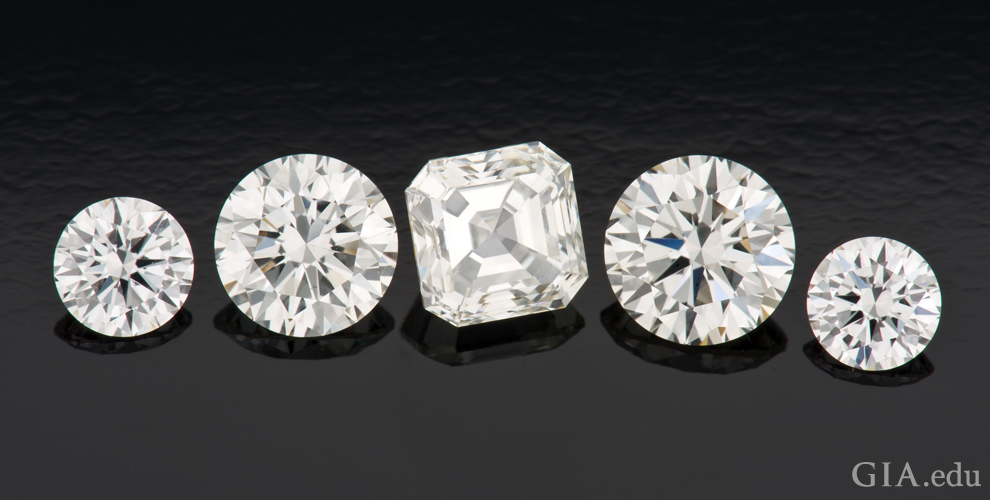Synthetic diamonds, also known as lab-grown or man-made diamonds, have revolutionized the jewelry industry over the past few decades. These diamonds, produced in controlled laboratory settings using advanced technological processes, are chemically, physically, and optically identical to natural diamonds, yet they come with distinct advantages. From ethical sourcing to cost-effectiveness, synthetic diamonds are becoming increasingly popular among consumers seeking sustainable and high-quality alternatives to mined diamonds. In this article, we explore the world of synthetic diamond jewelry, its benefits, production methods, and why it is gaining prominence in the modern marketplace.
What Are Synthetic Diamonds?
Synthetic diamonds are diamonds that are produced in laboratories using high-tech methods that replicate the natural conditions under which diamonds form deep within the Earth’s crust. While they share the same chemical composition as natural diamonds—composed purely of carbon—synthetic diamonds differ in their origin. Instead of being mined from the earth, these diamonds are created in a controlled environment.
The two primary methods of creating synthetic diamonds are:
-
High Pressure High Temperature (HPHT) – This method mimics the extreme pressure and temperature conditions that naturally occur in the Earth’s mantle. Carbon is subjected to high pressure and temperature to form diamond crystals.
-
Chemical Vapor Deposition (CVD) – This method involves using a gas mixture (typically methane) in a vacuum chamber, where it is heated to produce carbon atoms that crystallize onto a substrate, forming a diamond.
Both processes result in diamonds that are virtually indistinguishable from natural diamonds in terms of their chemical and physical properties. The only differences lie in their origin and, in some cases, slight trace elements or impurities that may be present during the creation process.
The Growing Popularity of Synthetic Diamond Jewelry
Over the past decade, synthetic diamonds have seen a surge in popularity, especially in the jewelry market. Several factors have contributed to this shift:
1. Ethical Sourcing
One of the primary motivations for choosing synthetic diamonds is the ethical concerns associated with traditional diamond mining. The mining of natural diamonds has often been linked to human rights abuses, child labor, and environmental degradation. In some cases, diamonds have been used to fund conflict in war-torn regions, which led to the term “blood diamonds.”
By contrast, synthetic diamonds are produced in a controlled, transparent environment where the labor practices are regulated and the environmental impact is much smaller. For consumers who want to avoid contributing to unethical mining practices, lab-grown diamonds provide a guilt-free alternative.
2. Affordability
Synthetic diamonds are generally more affordable than their natural counterparts. This price difference can be significant, often up to 40% less than a comparable mined diamond. The cost savings allow consumers to purchase larger diamonds or invest in other luxury features, such as higher-quality metal settings or more intricate designs. This affordability has made synthetic diamonds an attractive choice for engagement rings, wedding bands, and other fine jewelry.
3. Environmental Benefits
The environmental impact of diamond mining is a significant concern, particularly when considering the large-scale excavation of land, water use, and carbon emissions associated with traditional diamond mining operations. Synthetic diamonds, on the other hand, require far less land disturbance and generate less environmental harm during their production.
Though the energy requirements for producing synthetic diamonds are high, many companies are moving toward greener energy solutions, such as solar and wind power, to reduce the carbon footprint of diamond manufacturing.
4. Technological Advancements
As the technology behind synthetic diamond production improves, the quality of the diamonds has also advanced. Lab-grown diamonds are now available in a wide range of shapes, sizes, and colors, with many companies offering certification from reputable gemological laboratories, such as the Gemological Institute of America (GIA). Consumers can be assured that the diamonds they purchase are of the same quality and value as mined diamonds.
The Benefits of Synthetic Diamond Jewelry
1. Identical to Natural Diamonds
Synthetic diamonds are chemically, physically, and optically identical to natural diamonds. Both types of diamonds score a perfect 10 on the Mohs scale of hardness, making them extremely durable and ideal for everyday wear. Whether it’s an engagement ring, a necklace, or a pair of earrings, synthetic diamonds offer the same brilliance and fire that make natural diamonds so captivating.
2. Customization and Design Flexibility
Because synthetic diamonds are created in a lab, they offer more flexibility in terms of size and shape. Jewelers can create custom pieces that feature larger diamonds or unique cuts at a lower cost. Moreover, synthetic diamonds are available in a wide array of colors, including traditional white diamonds as well as fancy colors such as blue, pink, and yellow. This wide variety of options enables consumers to select the perfect diamond for their needs, whether they are seeking something classic or more modern and unique.
3. Transparency in Sourcing
Many synthetic diamond producers are committed to ethical and transparent sourcing. Consumers can trace the entire journey of a synthetic diamond, from its creation in a lab to its eventual setting in jewelry. This level of transparency is not always possible with natural diamonds, particularly those sourced from regions with questionable ethical practices.
4. No Impact on the Natural Ecosystem
Unlike diamond mining, which can have devastating effects on ecosystems, synthetic diamonds have a much smaller environmental footprint. The process of creating synthetic diamonds uses less water, energy, and land, and the environmental damage is significantly lower. For consumers concerned about the environment, lab-grown diamonds offer a more sustainable option without sacrificing quality.
How to Identify Synthetic Diamond Jewelry
While synthetic diamonds are virtually identical to natural diamonds, they can be distinguished through specialized equipment. Professional gemologists use advanced techniques, such as spectroscopy, to identify the minute differences in trace elements and growth patterns between synthetic and natural diamonds. However, for most consumers, the distinction is not visible to the naked eye, making synthetic diamonds an appealing option for those seeking high-quality jewelry at a lower price.
Certification
Just like natural diamonds, synthetic diamonds can be certified by reputable gemological institutions. Certificates will provide essential details about the diamond’s quality, including the 4 Cs—cut, color, clarity, and carat weight—as well as the method of production. Many well-known jewelers offer synthetic diamonds with GIA or IGI certifications, which provide confidence in the authenticity and quality of the diamond.
The Future of Synthetic Diamond Jewelry
As technology continues to improve, the synthetic diamond market is expected to grow. Increasing consumer awareness about the ethical and environmental advantages of lab-grown diamonds is likely to further accelerate their popularity. Additionally, the broader acceptance of synthetic diamonds in luxury jewelry markets, including high-end engagement rings, suggests that this trend will continue.
Consumers will also benefit from ongoing innovations in the manufacturing process, which may lead to even more affordable options and a greater variety of diamond shapes and sizes. With these developments, synthetic diamonds are poised to become an even more significant part of the global jewelry market.
Conclusion
Synthetic diamonds are not just a passing trend; they are shaping the future of the jewelry industry. With their ethical sourcing, environmental benefits, and price advantages, lab-grown diamonds offer consumers a responsible yet luxurious alternative to traditional mined diamonds. Whether you’re looking for a dazzling engagement ring, a statement necklace, or a unique pair of earrings, synthetic diamonds are a versatile and appealing choice that combines beauty, quality, and sustainability. As the demand for lab-grown diamonds continues to rise, it’s clear that synthetic diamond jewelry is here to stay.


